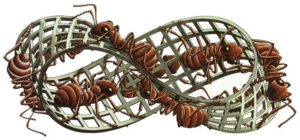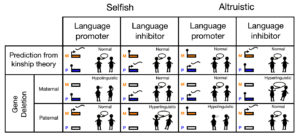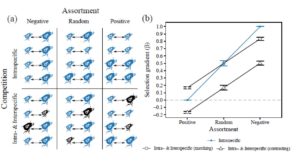Faria GS, Gardner A & Carazo P (in press) Kin discrimination and demography modulate patterns of sexual conflict. Nature Ecology & Evolution. doi: 10.1038/s41559-020-1214-6
(Image: Africa Gómez)
Recent years have seen an explosion of interest in the overlap between kin selection and sexual selection, particularly concerning how kin selection can put the brakes on harmful sexual conflict. However, there remains a significant disconnect between theory and empirical research. Whilst empirical work has focused on kin-discriminating behaviour, theoretical models have assumed indiscriminating behaviour. Additionally, theoretical work makes particular demographic assumptions that constrain the relationship between genetic relatedness and the scale of competition, and it is not clear that these assumptions reflect the natural setting in which sexual conflict has been empirically studied. Here, we plug this gap between current theoretical and empirical understanding by developing a mathematical model of sexual conflict that incorporates kin discrimination and different patterns of dispersal. We find that kin discrimination and group dispersal inhibit harmful male behaviours at an individual level, but kin discrimination intensifies sexual conflict at the population level.
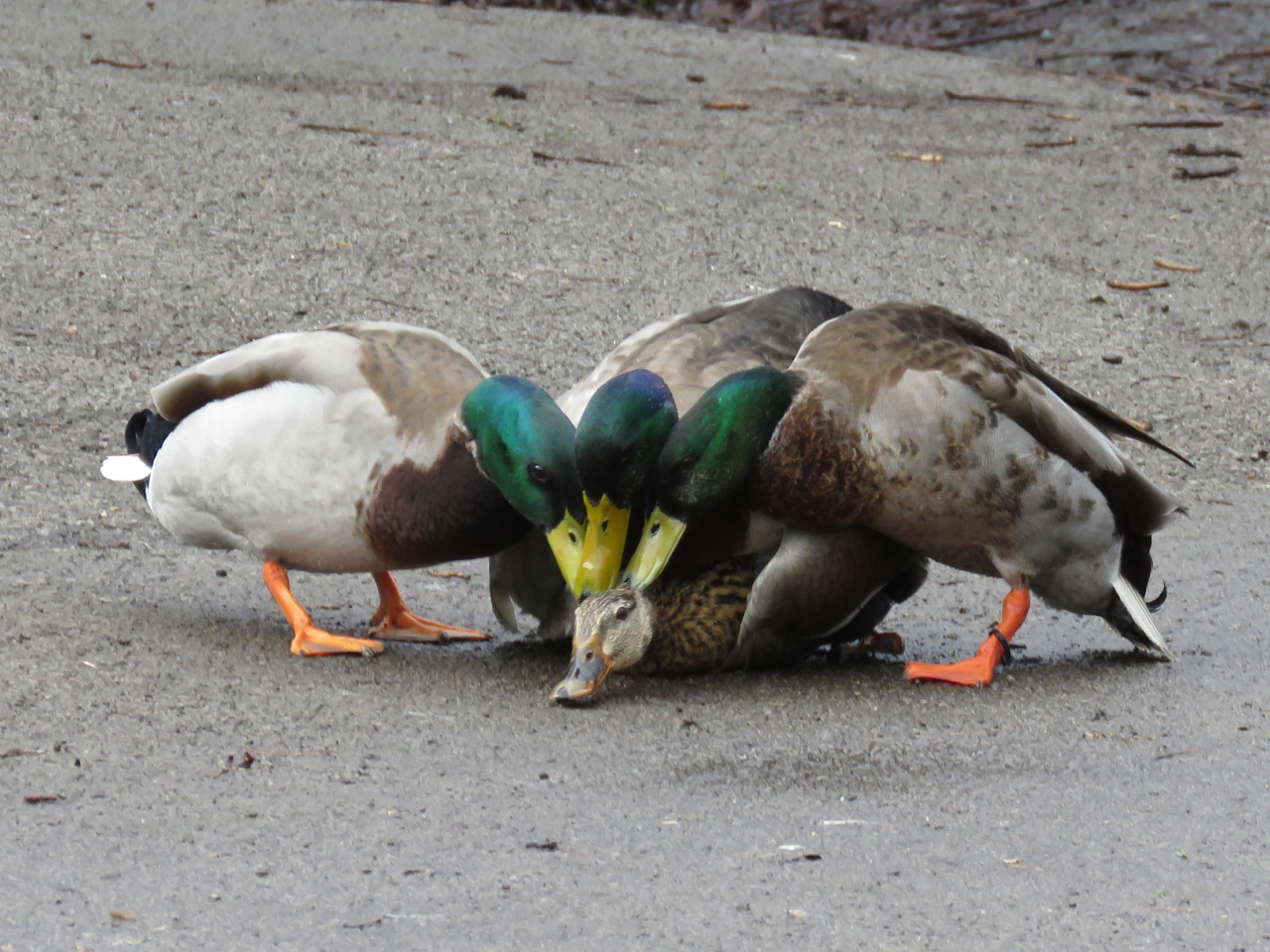



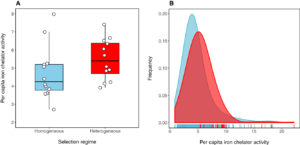 Heterogeneity in resources is a ubiquitous feature of natural landscapes affecting many aspects of biology. However, the effect of environmental heterogeneity on the evolution of cooperation has been less well studied. Here, using a mixture of theory and experiments measuring siderophore production by the bacterium Pseudomonas aeruginosa as a model for public goods based cooperation, we explore the effect of heterogeneity in resource availability. We show that cooperation in metapopulations that were spatially heterogeneous in terms of resources can be maintained at a higher level than in homogeneous metapopulations of the same average resource value. The results can be explained by a positive covariance between fitness of cooperators, population size, and local resource availability, which allowed cooperators to have a disproportionate advantage within the heterogeneous metapopulations. These results suggest that natural environmental variation may help to maintain cooperation.
Heterogeneity in resources is a ubiquitous feature of natural landscapes affecting many aspects of biology. However, the effect of environmental heterogeneity on the evolution of cooperation has been less well studied. Here, using a mixture of theory and experiments measuring siderophore production by the bacterium Pseudomonas aeruginosa as a model for public goods based cooperation, we explore the effect of heterogeneity in resource availability. We show that cooperation in metapopulations that were spatially heterogeneous in terms of resources can be maintained at a higher level than in homogeneous metapopulations of the same average resource value. The results can be explained by a positive covariance between fitness of cooperators, population size, and local resource availability, which allowed cooperators to have a disproportionate advantage within the heterogeneous metapopulations. These results suggest that natural environmental variation may help to maintain cooperation.